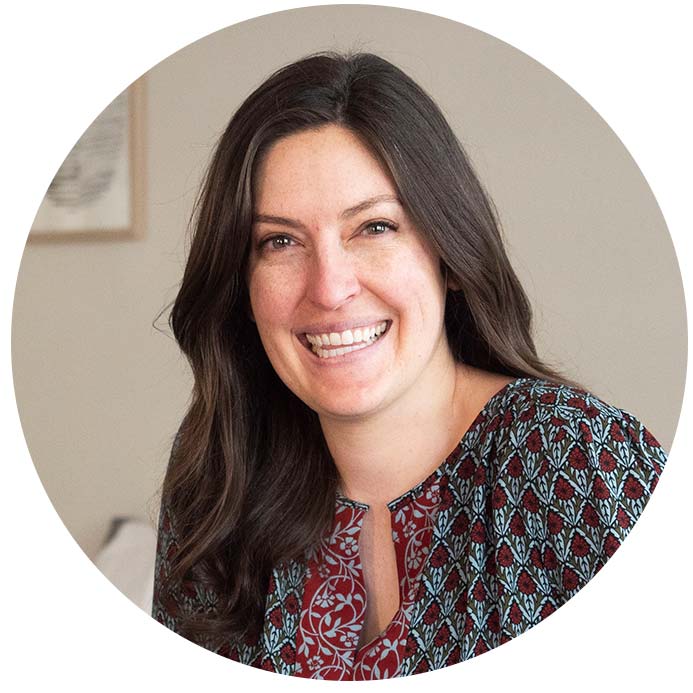There are so many different health and developmental issues that can affect your sleep. One of those is autism spectrum disorder (ASD). According to Autism Speaks, autism spectrum disorder (ASD) “refers to a broad range of conditions characterized by challenges with social skills, repetitive behaviors, speech, and nonverbal communication.”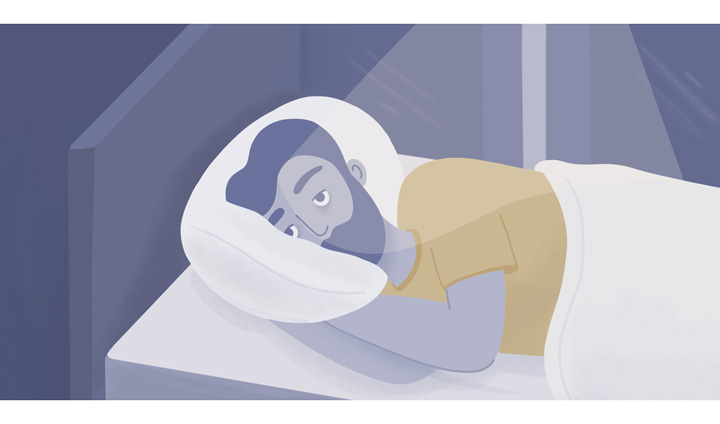
As the name suggests, the condition is a wide-ranging spectrum and affects people in many different ways. The majority of people with ASD are diagnosed as babies or children, though it’s not entirely uncommon for adults to realize they show signs of the disorder later in life. ASD is significantly more common in boys and men than in women and girls.
Some adults living with ASD have a severe form of the disorder and are unable to live alone or care for themselves. Other individuals are extremely high-functioning and have no trouble navigating higher education, professional workplaces, and romantic and familial relationships. The term ASD truly encompasses so many different things.
ASD is not new, but the statistics show huge growth in the number of people being diagnosed. In 2018, researchers at the Johns Hopkins Bloomberg School of Public Health estimated that 1 in 59 8-year-old kids in the U.S. has autism spectrum disorder — up from 1 in 150 children back in 2007.
Experts aren’t totally sure what’s behind this massive increase, but they suspect that awareness about ASD and education about the signs and symptoms mean that people who may have gone undiagnosed in the past are getting the recognition and support that they deserve. Per the Autism Society of America, 1% of people globally are living with ASD.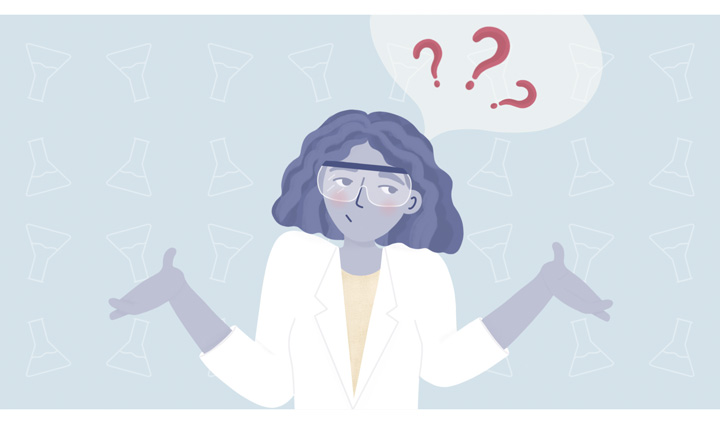
Because ASD is so varied, and experts don’t know exactly what causes it, the links to sleep disorders are difficult to explain. What we do know is that children and adults with ASD often suffer from sleep issues like insomnia, shorter REM sleep, and waking up in the night. This can lead to sleep deprivation, and also affect caregivers and family members in the same household.
This piece will cover what autism spectrum disorder is, and common signs of the condition. It will also explain the diagnosis process and any therapies experts believe can help people with severe ASD. It will touch on the sleep issues associated with ASD, and the recommended treatments for those sleep disorders. Finally, it will offer a number of resources for people who want to learn more about ASD.
What Is Autism Spectrum Disorder?
Harvard Health describes ASD as “a developmental disorder of the brain,” noting that people living with ASD can sometimes have trouble communicating with others or interacting in social settings. Because ASD is a spectrum, there is no “typical” person with ASD — experiences with the condition vary. Some individuals with ASD are nonverbal and require a full-time caregiver, while others are able to function in society without assistance.
The Autism Society explains that there was a major update to how ASD was defined and diagnosed when the newest version of the American Psychiatric Association’s Diagnostic and Statistical Manual of Mental Disorders (DSM-5) was released in 2013.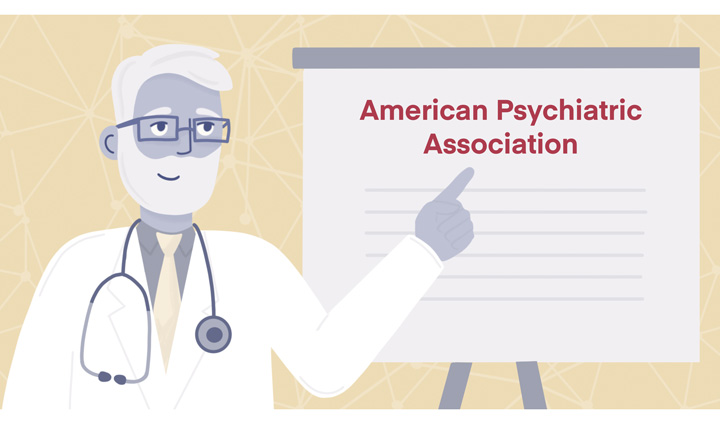
“The DSM-5 redefined autism,” the society website says. “Its predecessor, the DSM-IV-TR, included five Pervasive Developmental Disorders (PDDs): Autistic Disorder, Asperger’s Disorder, Rett’s Disorder, Childhood Disintegrative Disorder and Pervasive Developmental Disorder Not Otherwise Specified (PDD-NOS). In the DSM-5, Autistic Disorder, Asperger’s Disorder and PDD-NOS are replaced by the diagnosis of Autism Spectrum Disorder.”
There are a number of conditions that are either part of the ASD continuum or associated with ASD, due to similar signs and outcomes. Some conditions that were previously separate from ASD have now been folded into the same diagnostic criteria. These conditions include:
Asperger’s Syndrome
“It is an autism spectrum disorder (ASD), one of a distinct group of neurological conditions characterized by a greater or lesser degree of impairment in language and communication skills, as well as repetitive or restrictive patterns of thought and behavior,” the National Institute of Neurological Disorders and Stroke explains.
Rett Syndrome
This condition is more common in girls than in boys, and it “leads to severe impairments, affecting nearly every aspect of life: the ability to speak, walk, eat and breathe easily,” Rettsyndrome.org says. “The hallmark of Rett syndrome is near constant repetitive hand movements while awake.” Rett syndrome is a genetic condition, but it’s not inherited. “Rett syndrome is estimated to affect one in every 10,000 to 15,000 live female births and in all racial and ethnic groups worldwide,” the National Institutes of Health website says.
Childhood Disintegrative Disorder
This disorder is also known as Heller’s syndrome or disintegrative psychosis. This condition is a rare, “progressive neurological condition which results in a continuous loss of skills over the duration of a child’s life.”
Pervasive Developmental Disorder Not Otherwise Specified, Also Known As PDD-NOS.
“PDD-NOS was one of several previously separate subtypes of autism that were folded into the single diagnosis of autism spectrum disorder (ASD) with the publication of the DSM-5 diagnostic manual in 2013,” Autism Speaks explains.
The organization says that PDD-NOS, “became the diagnosis applied to children or adults who are on the autism spectrum but do not fully meet the criteria for another ASD such as autistic disorder (sometimes called ‘classic’ autism) or Asperger syndrome.”
The Cause(s) Of ASD Are Unclear
The Autism Speaks website says that ASD is likely influenced by both genetic and environmental factors. The organization notes that certain factors may increase the risk of an ASD diagnosis, including:
- Advanced parental age (from either biological parent)
- Complications during pregnancy and birth, for example, extremely premature birth or low birth weight
- Pregnancies spaced less than one year apart
- A sibling, twin, or family member having ASD
- Other genetic conditions. According to the Centers for Disease Control and Prevention (CDC), “about 10 percent of children with autism are also identified as having Down syndrome, fragile X syndrome, tuberous sclerosisexternal icon, or other genetic and chromosomal disorders.”
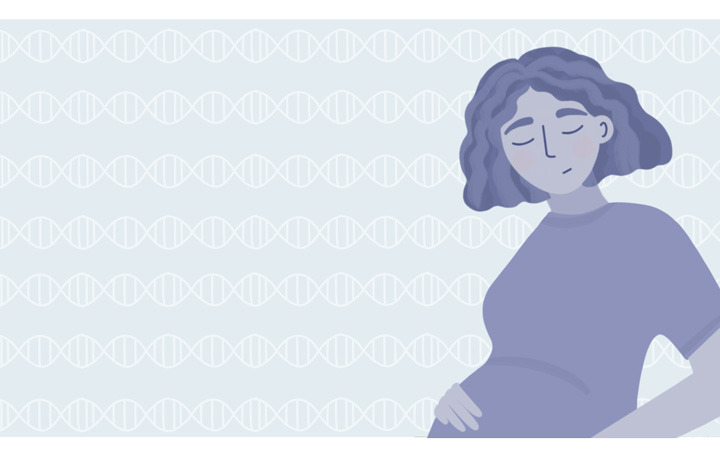
Because we don’t know exactly what causes ASD, we also don’t know how to lower the risks of developing it. But doctors and researchers are careful to stress that there is no connection between autism and vaccinations. According to the Children’s Hospital of Philadelphia, any data suggesting that vaccines cause autism is extremely flawed.
In addition, the CDC website says: “Many studies have looked at whether there is a relationship between vaccines and autism spectrum disorder (ASD). To date, the studies continue to show that vaccines are not associated with ASD.”
Common Symptoms Related To ASD
Harvard Health says that the two main criteria for autism spectrum disorder are “persistent deficits in social communication and interaction (such as interacting socially, nonverbal communication, or developing, maintaining and understanding relationships), and restrictive, repetitive patterns of behavior, interests or activities.”
The Mayo Clinic says that a child or adult with ASD may show the following signs:
- Does not respond to their name when called
- Appears not to hear you when you call their name
- Resists cuddling, holding, and other types of physical contact
- Resists eye contact with other people
- Does not speak or has delayed speech
- Cannot start or continue a conversation
- Only starts a conversation to request something or categorize items
- Does not understand simple questions or directions
- Struggles to express emotions
- Struggles to recognize nonverbal cues, like body language
Plus, a child or adult with ASD may show the following signs associated with patterns of behavior:
- Performs “repetitive movements” like rocking back and forth or flapping their hands
- Performs potentially harmful activities like banging their head
- Becomes attached to specific routines and/or rituals
- “Is unusually sensitive to light, sound or touch, yet may be indifferent to pain or temperature”
- Fixates on specific objects or activities
- Shows extremely specific food preferences, especially related to texture
The Cleveland Clinic lists some signs that may suggest your child has ASD, noting that many people with the disorder display signs before they turn two years old.
One sign is a loss of speech or social skills for an infant or toddler at any age. Other potential signs include:
- Inconsistently responding to their name when called, or not responding at all
- By 6 months old: Not smiling or showing joy
- By 9 months old: “No back-and-forth sharing of smiles, sounds, and other facial expressions”
- By 12 months old: No babbling
- By 12 months old: “No back-and-forth gestures such as showing, pointing, reaching, or waving”
- By 16 months old: No words
- By 24 months old: “No meaningful, two-word phrases (not including imitating or repeating)”
The clinic website says that if your child shows any of these signs, chat with your pediatrician about possible causes. None of the above are definitive symptoms, but they are potentially associated with ASD.
Experts say that early intervention can help people with ASD improve their learning and communication skills, which is why it can be helpful to raise any early concerns with your child’s doctor.
If you are a parent concerned that your child may have ASD, in addition to chatting with your pediatrician the American Psychiatric Association recommends keeping your child on a steady routine, learning as much about ASD as you can, and connecting with other families who have members with the condition.
Harvard Health says that while there’s no singular treatment for ASD, some children who display severe signs may improve with age. Autism Speaks notes that ASD is “often accompanied by sensory sensitivities and medical issues such as gastrointestinal (GI) disorders, seizures or sleep disorders, as well as mental health challenges such as anxiety, depression and attention issues.”
An ASD Diagnosis Can Happen At Nearly Any Age
ASD can be difficult to diagnose, as the signs and behaviors vary from mild to severe. “There are no biological tests to determine autism,” the Cleveland Clinic explains. “However, specifically trained physicians, psychologists and speech language pathologists can do testing. This testing can capture autism-specific behavioral observations.”
Physicians will typically use the Diagnostic and Statistical Manual of Mental Disorders (DSM-5), released in May 2013, along with any observations, to diagnose ASD.
How ASD Impacts Sleep And What You Can Do
According to a study published in the Journal of Pediatric Nursing in 2017, 80% of children with ASD also live with a sleep problem that can affect them and their families. These sleep issues include: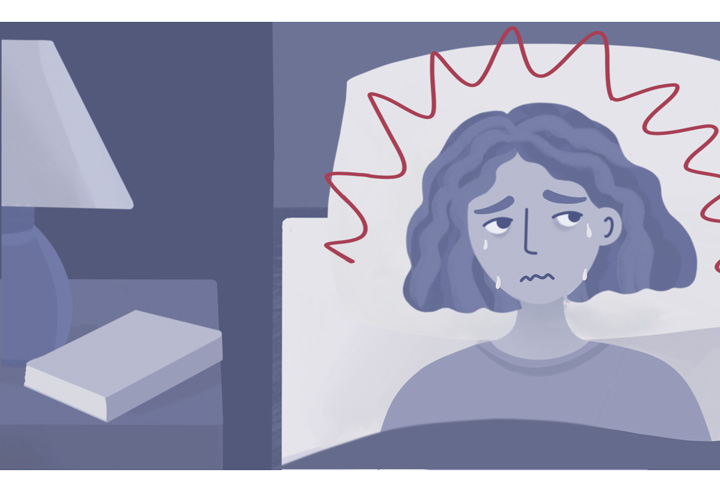
- Sleep onset delay
- Problems with sleep duration
- Sleep anxiety
- Waking up in the night
- Parasomnias, such as sleepwalking or talking while asleep
- Sleep-disordered breathing
- Daytime sleepiness
“Children with ASD appear to have some abnormal hormones, including melatonin and cortisol, and circadian rhythm profiles resulting in sleep reduction,” the study explained.
That means that children with ASD may not experience hormonal cues that make them sleepy or awake, affecting their internal “body clocks.” This can contribute to delayed sleep onset and insomnia, which can result in sleep deprivation.
A 2015 study published in the Journal of Pediatric Neuroscience said: “Sleep problems in ASD are a prominent feature that have an impact on social interaction, day to day life, academic achievement, and have been correlated with increased maternal stress and parental sleep disruption.”
The link between ASD and sleep issues is a vicious cycle because sleep deprivation can make some ASD signs worse. For example, a child with ASD may have a stronger reaction to any disruption in routine, leading to them being too upset to fall asleep again at their typical bedtime the following evening.
It’s difficult to predict what sleep issues will come with ASD, meaning both people with ASD and caregivers for children with ASD have to tackle problems as they arise. Luckily, there are resources available for people seeking information and help. You’ll find more of these resources further along in this piece.
Improving Sleep In Kids And Teens With ASD
An Autism Speaks informational booklet, Strategies to Improve Sleep in Children with Autism, offers a number of tips for parents and caregivers. The booklet recommends:
- Keeping the child’s bedroom cool, dark, and quiet
- Ensuring the child is comfortable in their bed (see the best mattresses for kids), particularly when it comes to the texture of the bedding, the temperature of the room, and ambient noise
- Establishing a regular bedtime routine
- Offering children with ASD a “visual schedule” or “to-do list” to help acclimate them to the bedtime routine
- Setting regular bedtimes, wake times, and nap times when applicable
- Serving your child meals at the same time each day and avoiding heavy snacks late at night
- Exposing your child to daylight in the morning and darkness at night, to help regulate their body clocks
The organization also offers an informational booklet for helping teens with ASD get enough sleep. Suggestions include:
- Ensuring your teen gets access to daylight in the morning and darkness at night
- Encouraging physical activity
- Limiting caffeine intake
- Introducing a “wind-down routine” at night
- Finding a bedtime routine that works for your teen and encouraging them to follow it each night
- Ensuring that your teen has a dark, quiet, cool, and comfortable sleeping area
RELATED: Parents’ Guide To Helping Kids Sleep
Sleep training
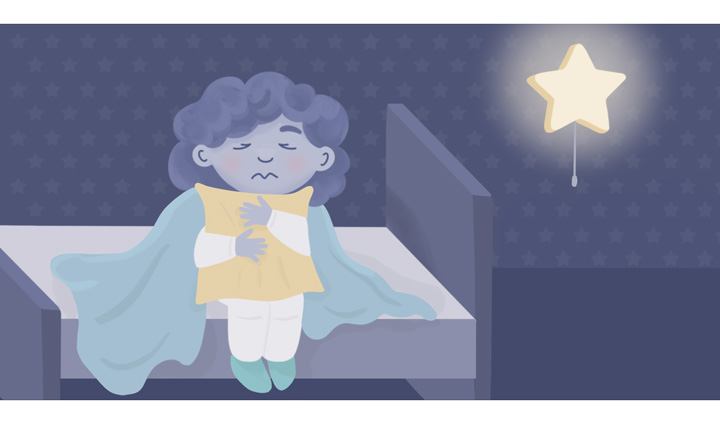 Sleep training may be a helpful tool for helping kids with ASD who are visibly upset at bedtime. A 2015 paper published in the Journal of Pediatric Neurosciences recommends following a bedtime routine, ensuring your child is tucked into their bed or placed in their crib, then leaving the room. After a few minutes, you can go back into the room to check on the child if they are crying or upset, ideally for no longer than a minute at a time. You can soothe an upset kid during these checks by rubbing their back or giving them a thumbs up.
Sleep training may be a helpful tool for helping kids with ASD who are visibly upset at bedtime. A 2015 paper published in the Journal of Pediatric Neurosciences recommends following a bedtime routine, ensuring your child is tucked into their bed or placed in their crib, then leaving the room. After a few minutes, you can go back into the room to check on the child if they are crying or upset, ideally for no longer than a minute at a time. You can soothe an upset kid during these checks by rubbing their back or giving them a thumbs up.
“Gently but firmly say, ‘it’s okay, it’s bedtime, you are okay’ or a similar phrase and then leave the room until it is time for the next check or until the child falls asleep,” the paper suggests. Not all kids with ASD will respond well to sleep training, and the paper stresses that it can initially upset some kids. If you try sleep training, the authors say, expect for things to get worse before they get better — you may have a number of nights where your child is extremely upset and anxious.
If insomnia persists in your child or teen with ASD, your doctor may suggest using medication or supplements. In 2016, a paper in Current Sleep Medicine Reports noted that “the pharmacological options for treatment of insomnia in children are limited” and stressed that many drugs to treat insomnia are only approved by the FDA for use in people over the age of 18. Some potential pharmacological treatments you could discuss with your child or teen’s doctor are:
- Melatonin. A study published in the Journal of the American Academy of Child & Adolescent Psychiatry in 2017 found that prolonged-release melatonin mini-tablets helped children and adolescents with ASD sleep for up to an hour longer each night. This follows a 2008 study from the Journal of Child Neurology, which found that administering between 0.75 milligrams and 6 milligrams of melatonin per night to children and teens with ASD improved their sleep issues.
- OTC painkillers with an antihistamine. According to a paper published in the journal Pediatrics in 2003, pediatricians may recommend over-the-counter painkillers with an antihistamine to kids and teens with insomnia. This treatment is not specific to kids with ASD.
- Clonidine. One extremely small study, published in European Child & Adolescent Psychiatry in 2005, tested the use of clonidine in six kids with varying neurodevelopmental disorders. Clonidine, a medication for high blood pressure that is also a sedative, helped the children in this study to some extent. However, more research is needed.
Improving Sleep In Adults With ASD
The correct steps to take depend on the type of sleep disturbances. According to a study published in the journal Autism Research in 2019, adults with ASD can take much longer to fall asleep, and wake up more often in the night for longer periods of time.
Because the connection between ASD and sleep issues is not clear-cut, experts aren’t entirely sure how to resolve them. However, standard recommendations for improving these types of sleep issues can help some individuals with ASD manage their sleep, too.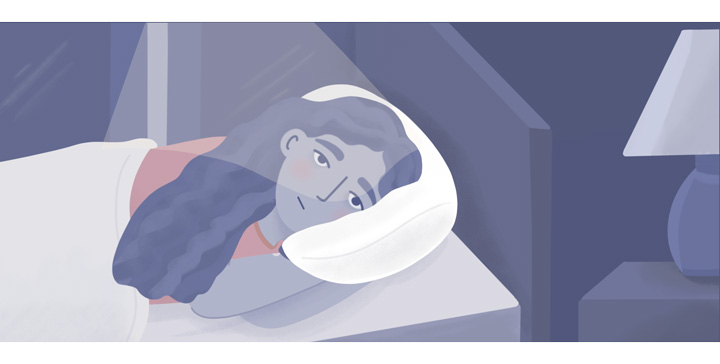
According to the National Sleep Foundation, it’s normal to spend about 10-20 minutes lying in bed before you fall asleep. If your sleep latency (that’s the time it takes you to fall asleep) is an hour or longer, this can be a signal of sleep-onset insomnia. Insomnia can also cause night-time wakeups or waking up inappropriately early in the morning.
Following a sleep hygiene routine may help some people with insomnia and night-time wakeups. Recommended sleep hygiene tips include:
- Avoiding alcohol and caffeine for a few hours before bed
- Keeping your bedroom cool, dark, and quiet
- Using your bed solely for sleep or sex
- Implementing a “wind-down” routine before you go to bed, such as listening to relaxing music or reading a book
- Avoiding blue screens for at least one hour before bedtime
- Limiting naps to the morning or early afternoon
- Eating light meals at night time and cutting off further snacks close to bedtime
In cases of severe insomnia, speak to your doctor about various treatments you could try. Some common options include behavioral therapy and medication.
Behavior therapy
One popular form of therapy is Cognitive Behavioral Therapy for Insomnia, also known as CBT-I. According to Stanford Health, CBT-I “helps patients overcome obstacles to making the necessary and often difficult changes in sleep-related behaviors” by helping them associate their bed and bedtime with sleep, eliminate any habits that prevent sleep, and reducing “sleep-related worry” and anxiety.
There are various different forms that CBT-I can take, depending on what your doctor recommends. Possible examples include:
Stimulus control.
“The goal of this method is for you to have a positive response when you get into bed at night,” Sleep Education explains. “This method teaches you to use the bed only for sleep and for sex. You are not to read, watch TV, or do anything else in bed. You are also taught to go to bed only when you feel very sleepy. If you are not asleep after about 20 minutes, then you are to get out of bed to do something else relaxing. When you feel sleepy again, then you return to bed.”
Sleep restriction
The concept behind sleep restriction involves limiting the time you spend in bed each night, then gradually increase that amount over time. “The initial time in bed is usually the average nightly total sleep time over the last week,” Stanford Health says. For example, if you sleep an average of 6 hours per night, you would start restricting your time in bed to six hours nightly – regardless of how much of that time you actually spend asleep.
Per Stanford: “Usually people experience marked improvement in the quality of sleep after a week of restricted time in bed, but they also realize that that they are not getting enough sleep. In this case, the next step is to gradually extend the time spent in bed by 15 to 30 minutes, as long as wakefulness in the middle of the night remains minimal.”
Cognitive control
Cognitive Control can be helpful for people whose sleep problems stem from anxiety or time spent “overthinking” at night, sometimes combined with psychotherapy. Sleep Education explains: “These methods are used to help you identify attitudes and beliefs that hinder your sleep. These negative thoughts involve worries and stress that keep you awake. A therapist helps you process your thoughts and feelings about sleep.”
Medication
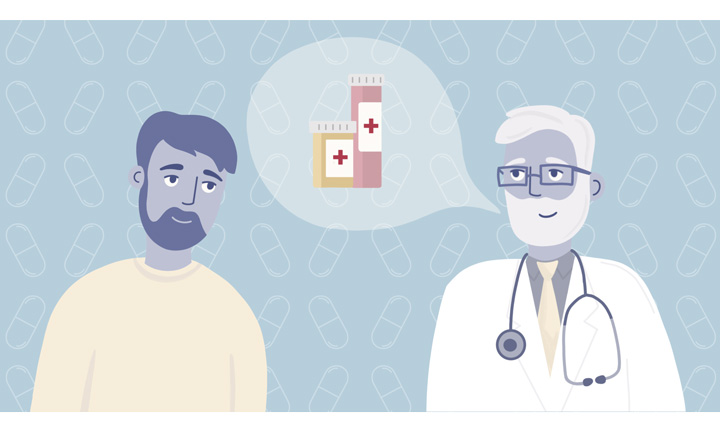 There are a number of medications that are indicated for short-term insomnia treatment, though these are typically a stopgap measure — you don’t want to rely on medication for sleep every single night for the rest of your life, and some medications come with the potential for abuse or dependence. Potentially helpful drugs for insomnia include:
There are a number of medications that are indicated for short-term insomnia treatment, though these are typically a stopgap measure — you don’t want to rely on medication for sleep every single night for the rest of your life, and some medications come with the potential for abuse or dependence. Potentially helpful drugs for insomnia include:
- Benzodiazepines, including estazolam, flurazepam (Dalmane), quazepam (Doral), and temazepam (Restoril), triazolam (Halcion)
- Nonbenzodiazepine hypnotics, such as eszopiclone, zaleplon, and zolpidem
- Using drugs that aren’t technically for insomnia, also known as off-label use of drugs, “such as other antidepressants, antihistamines, and antipsychotics”
If your doctor does prescribe sleep medication, it’s important to take the medicine exactly as prescribed or indicated by the physician.
Side effects
One thing to note — medications can trigger side effects, and some of these side effects will affect your sleep or your daytime energy levels. For example, the side effects of estazolam can include feeling very groggy, daytime drowsiness, and weakness. In the case of antihistamines, experts say using them for sleep can have side effects like sleepwalking or sleep talking.
Another consideration is that any medications to help with insomnia may interact with other prescription medications or supplements — and, ideally, you should not need to use medication to treat insomnia in the long-term. If you are concerned about insomnia or sleep issues related to ASD, speak with your doctor and be sure to mention any medications you are already taking.
If you do take medications, be sure to educate yourself about potential side effects and look out for those happening.
Alternative medicine options
According to the American College of Physician, acupuncture and herbal medicine may help some people with insomnia. A paper published in Complementary Therapies in Medicine in June 2016 reviewed 30 studies involving 2,363 participants, concluding that “acupuncture compared to sham/placebo and pharmacotherapy showed statistically significant results.”
Acupuncture
Acupuncture, a traditional Chinese practice that involves inserting extremely thin needles into parts of a person’s body, is used to treat a variety of conditions including pain and nausea.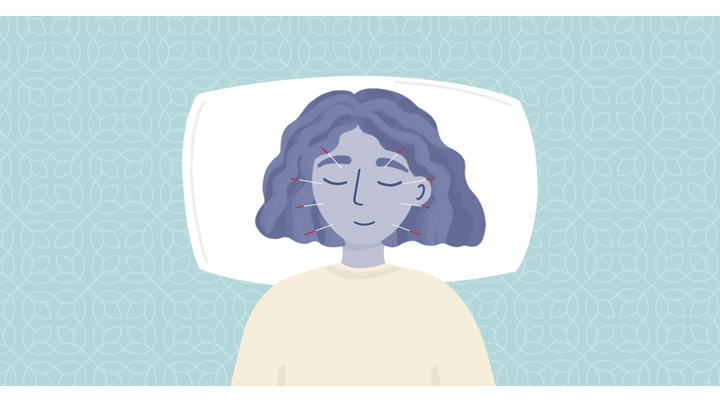
Though acupuncture is widely practiced, most physicians consider it something to try alongside western medicine rather than western medicine. A 2009 review of the literature published in the Journal of Alternative and Complementary Medicine analyzed 46 randomized trials of 3,811 patients. Researchers found “a beneficial effect of acupuncture compared with no treatment,” however, acupuncture was not found to be more effective than medication in increasing sleep duration.
According to this research, a combination of acupuncture and medication can be an effective course of treatment for insomnia. “Acupuncture plus medications showed better effect than medications alone on total sleep duration,” the paper explained. However, this research is not specific to insomnia that is linked to ASD.
Herbal Remedies
When paired with good sleep hygiene, some people may find that herbal remedies make a difference when paired with good sleep hygiene.
Valerian root is sometimes called “nature’s valium,” because some people find it helps them to relax or fall asleep. Capsules of valerian root are often sold as dietary supplements, and manufacturers claim they can help you sleep better.
Research on the link between valerian root and sleep is both limited and largely outdated, but a small study published in Psychopharmacology back in 1985 found that herbal valerian root “exerts a mild hypnotic action.” Some people say that valerian root helps them feel less anxious, which may be helpful for individuals with ASD and anxiety.
Chamomile tea is another popular herbal remedy for relaxation and sleep. A link between chamomile and sleep has not been established through research, but a 2010 paper published in Molecular Medicine Reports notes that chamomile has long been used for relaxation and says that “sedative effects may be due to the flavonoid, apigenin that binds to benzodiazepine receptors in the brain.”
It’s also possible that the simple act of drinking hot, non-caffeinated tea can be relaxing, helping you unwind before bedtime. For that reason, drinking a warm beverage like chamomile tea is part of some people’s bedtime routines.
Sleep Tips For Caregivers
Caring for an individual with ASD can be a serious undertaking on physical and mental and emotional levels. For many struggling with ASD at a young age, the care may fall to the child’s parents.
“Parents often fail to evaluate their own sources of strength, coping skills or emotional attitudes. You may be so busy meeting the needs of your child that you don’t allow yourself time to relax, cry or simply think,” says Autism Speaks. “You may wait until you are so exhausted or stressed out that you can barely carry on before you consider your own needs.”
Getting adequate sleep is important in coping with caring for someone with ASD. When you have had enough sleep, you’re better able to make decisions for yourself and others and are better equipped to handle the consistent stress of caring for a loved one with the disorder.
Scheduling breaks so that someone else can care for your child or your patient so that you can nap or have a relaxing time alone can be very helpful. Journaling about your experiences, anxieties, fears or other areas of stress can help improve emotional and mental wellbeing which leads to better quality sleep when you’re able to get it.
There is no one way to cope when you’re caring for someone with ASD. However, it is important to not forget your own needs and health priorities.
The Bottom Line
When it comes to ASD, there’s no one-size-fits-all diagnosis. The condition is a spectrum, ranging from mild to severe, and ASD signs and symptoms are extremely varied. Generally speaking, people living with ASD have some difficulties communicating with other people and exhibit patterns of behavior.
ASD is also associated with sleep problems in both children and adults. The best way to address these sleep problems depends on the individual and how severe the issue is — any serious sleep issues should be discussed with a physician. Following good sleep hygiene habits and establishing a regular bedtime routine can go an extremely long way.
Luckily, there is a growing collection of resources available for individuals with ASD and caregivers or family members. These range from the latest research and statistics to community forums where you can chat with understanding peers.
Further Resources
If you are concerned that you or a loved one is showing signs of ASD, bring it up with your physician. They will be able to advise you on the best next steps for your specific situation. If you’re seeking to learn more about ASD, check out the resources below.
Autism Speaks: What Is Autism?
The Autism Society of America: Facts About Autism
The Centers for Disease Control and Prevention: Autism Spectrum Disorder (ASD)
Autism Support Network: Support Community
American Psychiatric Association: What is Autism?
The Cleveland Clinic Center for Autism: Frequently Asked Questions
The Mayo Clinic: Autism Spectrum Disorder — Symptoms and Causes
The National Institute of Mental Health: Autism Spectrum Disorder
The National Autistic Society: Sleep and Autism
Autism Speaks Autism Treatment Network: Strategies to Improve Sleep in Children with Autism
Autism Speaks Autism Treatment Network: Sleep Strategies for Teens with Autism

